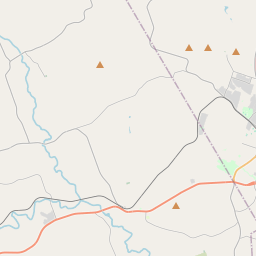Clear Creek Baptist Church
Historical marker location:






According to oral tradition, this congregation was organized in 1872 as the Clear Creek Missionary Baptist Church by six families who resided in this area of east Lampasas County. The church petitioned for membership in the Leon River Baptist Association in 1876 and sent delegates to the associational meeting the following year. The Rev. Ambrose W. Elledge (d. 1884) served as first pastor and is buried in the nearby cemetery. In 1889 Joseph M. and Alice Carnes formally deeded land at this site to the church deacons, although a sanctuary had been here since the late 1870s. During the last few years of the 19th century, the congregation joined the newly formed Lampasas Baptist Association and grew to a membership of 66 under the leadership of The Rev. C. C. Greer. In 1912, a tornado and then a hailstorm caused damage to the sanctuary, but repairs sufficed to keep the building standing until the decision to rebuild was made in 1940. Over the years a brush arbor and later an open air tabernacle were used for revivals. Baptisms were held in the Lampasas River (5 mi. S) until 1975. The oldest legible tombstone in the nearby church cemetery is dated 1872
As one of the most visible programs of the Texas Historical Commission (THC), historical markers commemorate diverse topics in Texas history, including: the history and architecture of houses, commercial and public buildings, religious congregations, and military sites; events that changed the course of local and state history; and individuals who have made lasting contributions to the state, community organizations, and businesses.
Texas was once a part of Mexico but gained independence in 1836 after a famous battle at the Alamo.
In 1852, Lampasas County was officially established, named after the Lampasas River that runs through the area. The county quickly became a prominent agricultural region, with cotton being the primary crop. The arrival of the Texas and Land Company railroad in 1882 further stimulated the local economy, as it facilitated trade and transportation in the area.
During the late 19th and early 20th centuries, Lampasas County also experienced economic growth due to the discovery of mineral resources. Manganese and zinc mining industries played a significant role in the county's development. Additionally, the city of Lampasas became a popular health resort destination, thanks to the therapeutic value of the local natural springs.
Throughout the years, Lampasas County has faced its fair share of challenges. The region went through difficult times during the Great Depression, with the decline of the agricultural industry. However, the county managed to bounce back and diversify its economy, embracing tourism and other industries. Today, Lampasas County remains a vibrant community with a blend of historical charm and modern development.
Lampasas County Timeline
This timeline provides a condensed summary of the historical journey of Lampasas County, Texas.
- 1854 - Lampasas County is founded and named after the Lampasas River.
- 1872 - The town of Lampasas becomes the county seat.
- 1882 - The Gulf, Colorado and Santa Fe Railway is completed through the county.
- 1885 - The first oil well in central Texas is drilled in Lampasas County.
- 1922 - The Hancock Springs Hotel, a popular health resort, is built.
- 1949 - The Fort Hood military reservation is established, impacting the county's economy.
- 1960s - The construction of the Highland Lakes dams brings tourism and recreation to the area.
- 1990s - The county experiences population growth and increased development.